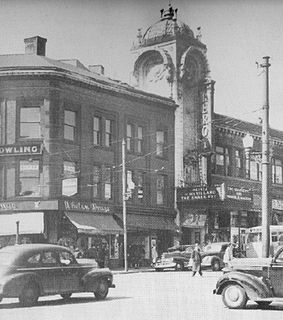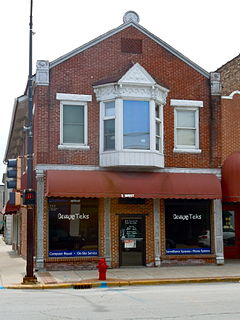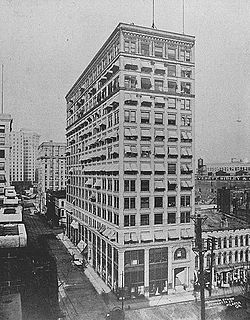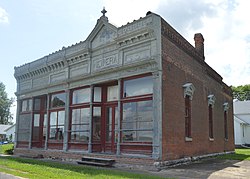
Orangeville is a village in Stephenson County, Illinois. The town's sign lists the population at 800 as of January 2021. The population in 2020 was 738. The population according to the 2010 census was 793, up from 751 in 2000. Using the 2020 population of 738 Orangeville is the 741st largest city in Illinois and the 11,650th largest city in the United States. Orangeville is currently declining at a rate of -0.94% annually and its population has decreased by -6.94% since the 2010 census. The area's earliest white settlers arrived in the year 1833, and the village was platted in 1851 by John Bower, who is considered the village founder. In 1867 Orangeville was incorporated as a village. The town's central business district contains several 19th century commercial buildings, many of which were built during the railroad boom of 1888–1914. By the time the Great Depression was ongoing, business in Orangeville had started to decline, with the last bank closing in 1932. In 1956 another bank started operating in the village and is still in town today. Some recent infrastructure jumps have restored some of the village's old decor.

The Dickeyville Historic District is a National Register of Historic Places-listed community located just inside the western edge of Baltimore City, Maryland, near the intersection of Interstates 70 and 695 and adjacent to Kernan Hospital. A small community of about 140 homes and a historic mill, the village is on the banks of the Gwynns Falls and lies at the start of the Gwynns Falls Trail, a 15-mile (24 km) walking and biking trail that is part of the Chesapeake Bay Gateways Network. The village includes two main roads, Wetheredsville Road and Pickwick Road, and three smaller lanes, Hillhouse Road, Tucker Lane and Sekots Road.

The Wilcox, Crittenden Mill, also known as Wilcox, Crittenden Mill Historic District, is a 17-acre (6.9 ha) property in Middletown, Connecticut that was listed on the National Register of Historic Places in 1986. It was the location of the Wilcox, Crittenden company, a marine hardware firm. The historic district listing included four contributing buildings and three other contributing sites.

The Ebenezer Methodist Episcopal Chapel and Cemetery is a historic church located northwest of Golden, Adams County, Illinois. The church was built in 1858-59 for the local Methodist Episcopal congregation. The church has a vernacular Greek Revival design; while the style was common in Illinois before the Civil War, the church is now the only one of its type in the county. The church is a white sided building on a limestone foundation; it is topped by a gable roof with a simple entablature at either end. The church's cemetery, located to the west of the building, has had burials since 1857 and contains both members and non-members of the church.
Exchange Bank or Exchange Bank Building may refer to:

Old Colorado City, formerly Colorado City, was once a town, but it is now a neighborhood within the city of Colorado Springs, Colorado. Its commercial district was listed on the National Register of Historic Places in 1982. It was founded during the Pikes Peak Gold Rush of 1859 and was involved in the mining industry, both as a supply hub and as a gold ore processing center beginning in the 1890s. Residents of Colorado City worked at some of the 50 coal mines of the Colorado Springs area. It was briefly the capital of the Colorado Territory. For many years, Colorado Springs prohibited the use of alcohol within its border due to the lifestyle of Colorado City's opium dens, bordellos, and saloons. It is now a tourist area, with boutiques, art galleries, and restaurants.

The Malvern Roller Mill, also known as Appel Mill and Malvern Milling Company, is a 19th-century grist mill located near the unincorporated village of Malvern, Illinois, in rural Whiteside County, north of Morrison, Illinois, United States. The original mill on the site, built by 1853, was destroyed by a flood and the present mill was erected in 1858. The mill's first owner was William P. Hiddleson who operated the mill until he sold to Benjamin Hough in 1871. The mill changed hands over the years until it landed under the control of George Appel in 1892. The Appel family closed the mill in 1942 but it remained in their family until 1985. The Malvern Roller Mill was added to the U.S. National Register of Historic Places in 1995.

The John H. Addams Homestead, also known as the Jane Addams Birthplace, is located in the Stephenson County village of Cedarville, Illinois, United States. The homestead property, a 5.5-acre (22,000 m2) site, includes an 1840s era Federal style house, a Pennsylvania-style barn, and the remains of John H. Addams' mill complex. The house was built in two portions, in 1846 and 1854 by Addams; he added some minor additions during the 1870s. Other major alterations took place during a 1950s modernization of the home. The homestead has been noted for its significance to industry and politics. On September 6, 1860 future Nobel Peace Prize recipient Jane Addams was born in the house.

Millville is a defunct settlement in Jo Daviess County, Illinois, United States, located within the boundaries of Apple River Canyon State Park. Founded in 1835 and platted in 1846, the community was washed away completely by a flood in 1892. No visible remnants of its structures remain today. The site of Millville was added to the U.S. National Register of Historic Places as the Millville Town Site in 2003.

Leroy Theatre was a historic movie palace in Pawtucket, Rhode Island. It was built in 1922, listed on the National Register in 1983, and demolished in 1997.

The Marine Mill, established in 1839, was the first commercial sawmill in what became the U.S. state of Minnesota. Now in ruins, it is currently a historic site managed by the city of Marine on St. Croix in partnership with the Minnesota Historical Society. It was listed on the National Register of Historic Places as the Marine Mill Site in 1970 for having state-level significance in the themes of exploration/settlement, industry, and transportation. It was nominated for being the birthplace of the region's seminal industry—lumbering—and a major landing on its crucial transportation route, the St. Croix River. The site is also a contributing property to the Marine on St. Croix Historic District.

The Victor Hotel is a historic hotel in the mining town of Victor, Colorado in the United States. The hotel is a four-story Victorian brick building built in 1899-1900 by the town's founders, the Woods brothers. It is on the National Register of Historic Places.

The Stolp Woolen Mill Store was built in 1860. It is located on Stolp Island in Aurora, Illinois. It was listed on the National Register of Historic Places in 1983. It is also a contributing building in the Stolp Island Historic District.

The J. Mack Robinson College of Business Administration Building is a 14-story highrise at the corner of Broad and Marietta streets in the Fairlie-Poplar district of downtown Atlanta, which houses the business school of Georgia State University. When completed in 1901 as the Empire Building, it was the first steel-frame structure and the tallest in the city, until surpassed by the Candler Building in 1906.

The Moline Downtown Commercial Historic District is a nationally recognized historic district located in Moline, Illinois, United States. Centered on 5th Avenue, it is roughly bounded by 12th Street to 18th Street, 4th Avenue to 7th Avenue. The distinct covers 33-acre (0.13 km2) and includes 114 buildings. One hundred of the buildings contribute to the significance of the district because they retain their historic and architectural integrity and reflect the character of the historic downtown.

The West Saint Clair Street Historic District is a residential historic district located along 124–328 West Saint Clair Street in the village of Almont in Almont Township in southeast Lapeer County, Michigan. It was designated as a Michigan State Historic Site and also added to the National Register of Historic Places on May 8, 1986.

The Downey Building is a historic building located at 110-112 Southwest Arch Street in Atlanta. The Italianate building was constructed in 1867 by local businessman Alexander Downey. The building contains two storefronts, which have historically housed separate businesses.

The Downtown East St. Louis Historic District is a historic commercial district in downtown East St. Louis, Illinois. The district includes 35 buildings, 25 of which are contributing buildings, along Collinsville Avenue, Missouri Avenue, and St. Louis Avenue; all but one of the buildings was historically used for commercial purposes. While development in the area dates back to the late 19th century, the first of the extant buildings in the district were built around 1900 after a tornado devastated the area in 1896. By 1910, the area had become a prosperous commercial district with stores, offices, and entertainment venues; surviving buildings from this period include the Murphy Building and the Cahokia Building. Another large building boom took place in the 1920s, adding buildings such as the Spivey Building, the city's only skyscraper; the Union Trust Bank Company Building, the largest bank in the city; the Grossman Building; and the Majestic Theatre. The new buildings both coincided with a population and economic expansion in the city and allowed it to forge an architectural identity distinct from neighboring St. Louis.

The Missouri Lumber and Mining Company (MLM) was a large timber corporation with headquarters and primary operations in southeast Missouri. The company was formed by Pennsylvania lumbermen who were eager to exploit the untapped timber resources of the Missouri Ozarks to supply lumber, primarily used in construction, to meet the demand of U.S. westward expansion. Its primary operations were centered in Grandin, a company town it built starting c. 1888. The lumber mill there grew to be the largest in the country at the turn of the century and Grandin's population peaked around 2,500 to 3,000. As the timber resources were exhausted, the company had to abandon Grandin around 1910. It continued timber harvesting in other parts of Missouri for another decade. While some of the buildings in Grandin were relocated, many of the remaining buildings were listed on the National Register of Historic Places in 1980 as part of the state's historic preservation plan which considered the MLM a significant technological and economic contributor to Missouri.

Exchange Place is a street in the Financial District of Lower Manhattan, New York City. The street runs five blocks between Trinity Place in the west and Hanover Street in the east.





















